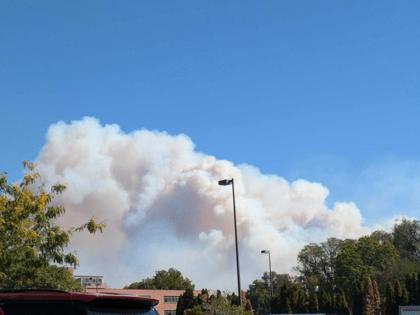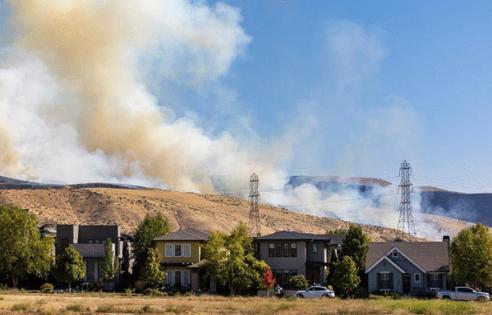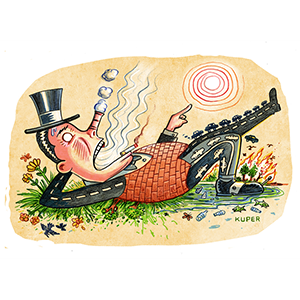'Battle zone': Damages from the Valley Fire cost tens of thousands
Published in News & Features
BOISE, Idaho — Greg Kaltenecker was just barely awake on Oct. 4, 2024, when the calls started coming in. It was 6:30 a.m. The Valley Fire had started.
“It was like going into a battle zone or something,” Kaltenecker said by phone, describing the scene he later saw. “I’d never seen damage like this before.”
A year later, the effects of the fire are still being felt. Kaltenecker is director of the Intermountain Bird Observatory, where a school group had been staying overnight and had to evacuate. The fire hurtled toward homes, prompted evacuations and created massive smoke plumes visible from downtown Boise. The observatory has faced tens of thousands of dollars in damages, Kaltenecker said, and lost gear and important plant life.
The observatory’s goal is to “impact human lives and significantly contribute to bird conservation,” according to its website. They monitor migrating birds, said Kaltenecker, who cofounded the observatory in 1992.
Their site is where the Foothills meet the forest on the Boise Ridge, he said, timbered with “these beautiful Douglas fir trees.” Half of those are burned and gone, he added. Half of the chokeberry and elderberry shrubs, important for songbirds migrating, were also burned up. The shrubs are starting to come back, but Kaltenecker said they’re seeing fewer forest owls and songbirds migrating.
They had to rebuild all of the traps and buy all new gear. It cost more than $30,000 to replace everything, he estimated.
Kaltenecker reflected on the “stressful” experience in an interview with The Idaho Statesman. At the time, it took five to seven days for observatory staff to go up with an escort to assess the destruction to the observatory, he said by phone.
Idaho Power ultimately paid $800,000 after the Idaho Department of Lands said it was responsible for the fire. An energized line from a downed power pole ignited several blazes, according to previous Statesman reporting.
The crew left all their own gear, most of which was lost, Kaltenecker said. The raptor banding station, where they capture and put a tag on the birds, was completely burned down.
“It was a shock,” he said. “It’s still a shock.”
But things are looking up. The mountain shrubs are coming back and should have “recovered significantly” within a decade. It will take a generation or more for the big trees to come back, if they do, he said. There are some planting efforts underway, he said.
The observatory is “more-or-less rebuilt,” and back open, though not for overnight camping.
“The public was fantastic,” he said. “Our supporters, they donated money, they donated time… it was really heartening to me to just see how many people we’ve affected over the years with our work. “
©2025 The Idaho Statesman. Visit idahostatesman.com. Distributed by Tribune Content Agency, LLC.










Comments